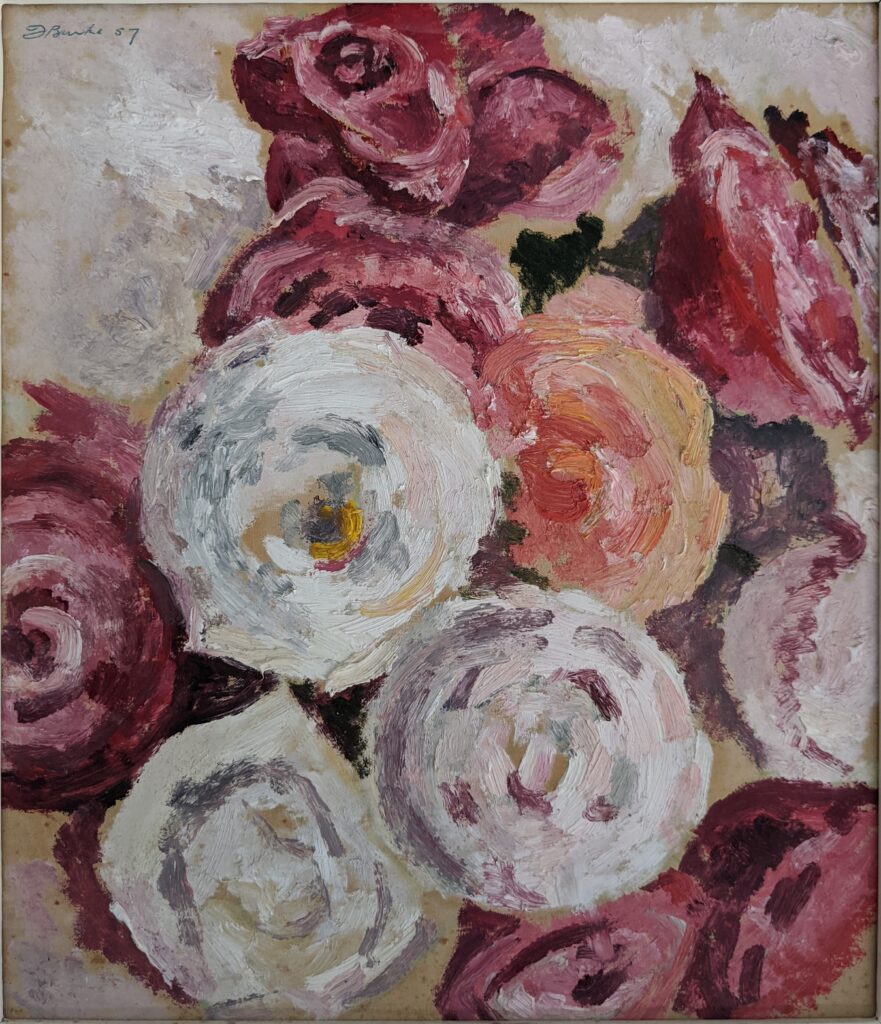
Fake or Fortune?
Do you have artworks in your collection that you really know next to nothing about? Have you ever wondered if you might be sitting on a work with potential to set the artmarket on fire and feature in one of those articles we all love to read about with titles like ‘Painting found in attic sells for [insert six-figure sum]’? Have you recently been watching the popular BBC show “Fake or Fortune” for tips?
When I worked at an Auction House, this was the potential scenario we encountered every week as people would contact us to appraise their property. Needless to say, the majority of things we saw were of marginal value.
But it’s always wise to check.
In this spirit, I thought I should take another look at a painting I purchased at a charity auction many years ago. I knew the painting was by an Australian woman artist, and I had been told by the Chairman of the auction when I collected my purchase that ‘it had been painted at Maie Casey’s property’. The name didn’t mean anything to me. Fortunately I had kept the catalogue from the auction – that’s where auction house training comes in handy!
A small painting of roses in a old-fashioned frame
In understanding an artwork and cataloguing it properly, the first step is always to establish who the artist is. In this case there did not seem to be much mystery – the work is signed F Burke 57 upper left. It was recorded in the catalogue as being by Frances Burke, with the minimal addition of Untitled and the medium oil on canvas. On the back, the work was inscribed in an elegant hand ‘Frances Burke / Berwick Roses’. It also carried a Jarman The Picture Framer label, and the name CASEY was written in capitals.
All of this information made it relatively easy to catalogue the work:
Frances Burke (1904 – 1994)
Berwick Roses 1957
oil on canvas on board
36.0 x 31.0 cm
signed and dated upper left: F Burke 57
Inscribed verso: Frances Burke / Berwick Roses *
Provenance
Victorian College of the Arts 25th Anniversary Art Auction, Lot 76. Donated by Diane Masters.
I really wasn’t in any doubt at this point, even though signatures and even a plausible provenance can be faked. Plus, Frances Burke is not an artist whose work was ever likely to be on the radar of a forger. Still, I felt that there was more to learn about the work and its alleged connection to Maie Casey. I also wanted to know more about the previous owner Diane Masters.
Biography of the artist
The excellent publication Frances Burke Designer of Modern Textiles helped me fill in a lot of the background. I was able to confirm many relevant biographical details about Frances Burke and her connections (and she was very well-connected!)
Born in Melbourne in 1904, Burke started studying art at the National Gallery of Victoria’s school of drawing in 1933. She also studied applied art at the Melbourne Technical College (later to become RMIT), winning scholarships in 1934, 1935, and 1936. In 1936 she left the Gallery school and attended George Bell’s art school. Fellow students included (Sir) Russell Drysdale, Peter Purves Smith, and Maie (Lady) Casey.
Post her art studies Burke did not pursue fine art as a career. Instead, she created a successful business headquartered in Melbourne designing and manufacturing printed textiles, utilising her considerable graphic design skills. It’s interesting in the light of this to note the way Burke painted this still life – rather than a frontal view of an arrangement in a vase, the blowsy roses fill the frame in an ‘all-over’ composition that suggests her interest was in pattern and 2-dimensional design rather than perspective and form.
Provenance: Lady Maie Casey
Having established that Frances Burke was connected to Maie Casey – in fact they were lifelong friends – I then wondered about the “painted at Maie Casey’s property” titbit that I was told by the Auction’s Chairman – the former Mayor of Stonnington, patron of the Arts and Gallery owner Claude Ullin AM. Claude sadly passed away in 2017 so I could not go back to him for more information. However it’s a matter of record that Lord Casey and Lady Maie lived on the property ‘Edrington’ in Berwick, so the circumstantial evidence seems very strong to me that the work was indeed painted there and depicts a bunch of roses from the Casey’s garden.
Provenance: Diane Masters
Lastely, I looked in to the Diane Masters connection, and was intrigued to learn that she was a former top model of the 1950s and 60s, a fashion illustrator and President of the Friends of the Victorian College the Arts in the 1980s and 1990s. The latter explaining no doubt her tangible support for the fundraising Auction where I acquired the work. Another close friend of Burke’s, Masters is credited with helping to facilitate the donation of her archives to RMIT University.
Not a fake, but not worth a fortune either, it was nonetheless very gratifying to find out all this information about one small painting and how it is relates to three very significant women in Australian history. I hope it’s been of interest to you too.

* having examined Frances’ Burke’s signature on her textiles and paintings I’m convinced the inscription is by her, so I’m confident of the title. The CASEY inscription is probably by someone else.
Acknowledgments
Thank you to RMIT University for copyright permission to illustrate the painting.
Reference
Frances Burke Designer of Modern Textiles
Nanette Carter and Robyn Oswald-Jacobs
The Miegunyah Press 2021, Melbourne
